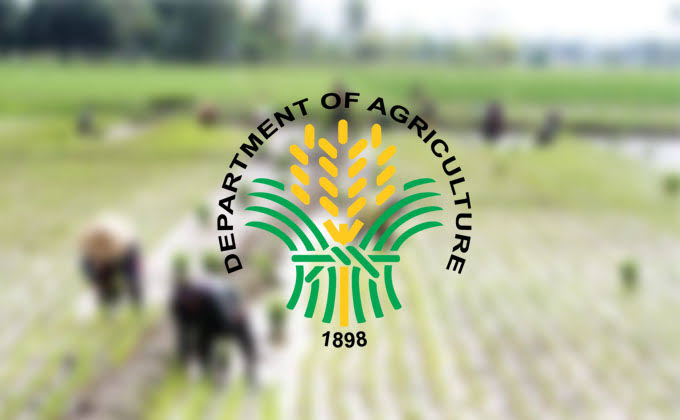'Wala tayong problema': Philippines' rice supply ample amid El Niño —DA
By Jel Santos

The Philippines has a “very healthy stock and inventory” of rice amid the devastation of the El Niño phenomenon, which has so far incurred P357.4 million in damage in the country, the Department of Agriculture (DA) said on Saturday, March 2.
Assistant Secretary Arnel de Mesa, the spokesperson of the DA, said the Philippines has no problem in terms of rice supply this year.
He noted that the country received 600,000 metric tons (MT) of imported rice this year that complimented the country’s rice stock.
“In terms of stocks natin sa bigas, for the first two months, per the report ng BPI [Bureau of Plants and Industry], more than 600,000 na ‘yung rice na dumating so on average, that’s about 300,000 metric tons which is at par sa expected natin na 300,000 MT per month na bigas na darating na imported (In terms of our stocks of rice, for the first two months, according to the BPI report, more than 600,000 rice have arrived so on average, that's about 300,000 metric tons which is at par with our expected 300,000 MT of imported rice per month),” he said in a news forum held in Quezon City.
“Iyong ating production last year na 20.06 million MT plus itong ating imports (Our production last year was 20.06 million MT plus these new imports of ours),” he went on.
De Mesa said Philippines’s rice harvest will peak in March and April, boosting the country’s current supply.
“So in terms of supply, wala po tayong problema, we have a very healthy stock and inventory para sa taong ito ( So in terms of supply, we have no problem, we have a bery healthy stock and inventory for this year),” he said.
Based on DA’s February 25 bulletin, the damage caused by the El Niño phenomenon has soared to P357.4 million, affecting Ilocos Region, MIMAROPA (Mindoro, Marinduque, Romblon, and Palawan), Western Visayas, and Zamboanga Peninsula.
De Mesa said Iloilo is the province most affected by the phenomenon with P127 million worth of agricultural damage.
“Pumapangalawa rito ang probinsya ng Oriental Mindoro na nagtala na ng P56 million losses. (Second is the province of Oriental Mindoro which recorded P56 million losses),” he added.
To cushion the effects of El Nino, De Mesa said the Agricultural Credit Policy Council has allotted P500 million for affected farmers and fishers.
“Bawat magsasaka ay pwedeng makahiram ng P25,000 bilang ayuda. Ito ay walang interest at collateral (Each farmer can get P25,000 as an aid. This has no interest at collateral),” he stated.
In addition, the DA spokesperson stated that the Philippine Crop Insurance Corporation has allocated P1.8 billion for the insurance claims of farmers affected by the dry spell.
Farmers in areas devasted by El Niño can get up to P21,000 of insurance claims, De Mesa said.
“Bukod sa mga ayudang ito, nagbahagi rin ng fuel assistance, ito ay P3,000 bawat isa, ‘yung ating Bureau of Fisheries and Aquatic Resources mayroon silang P500 million, ‘yung ating regional field offices ay mayroon din katumbas na P500 million na available nationwide (Aside from these aids, fuel assistance was also distributed, this is P3,000 each, our Bureau of Fisheries and Aquatic Resources has P500 million, our regional field offices also have the equivalent of P500 million available nationwide),” he said.
“Kasama pa rito ‘yung pamimigay natin ng shallow tube wells, at mga solar-powered irrigation systems doon sa mga lugar na may sustainable water sources (This includes the distribution of shallow tube wells and solar-powered irrigation systems).”
It can be recalled that the DA recently announced that hybrid rice seeds have been distributed to non-vulnerable areas in Western Visayas for maximization of production to compensate for the losses.
As such, the agriculture department said it will provide various vegetable seeds in Western Visayas and Ilocos Region.
The agency said high-value crops or HVC (including peanuts, legumes, and other crops that require less water) are being procured for Region IX and given to farmers who choose to switch to other crops.
Water sources for irrigation in affected areas in Region VI rely on tributaries that are currently drying up due to drought, the DA noted.
According to the DA, a list of El Nino-affected farmers will be endorsed to the Department of Social Welfare and Development (DSWD) and Department of Labor and Employment (DOLE) for other forms of assistance, including financial support.
The agriculture department is targeting to produce 20 million metric tons (MT) of palay this year.
Despite the dry spell, De Mesa said the government is still bullish to produce 20 million MT this year, banking on government measures to mitigate the impact of El Niño.
The DA is currently implementing "Alternate Wetting and Drying" which uses less water for farming, and "Quick Turn Around" or QTA which allows immediate rice replanting right after harvest.
The agency said the AWD is a water-saving technique that rice farmers can implement to reduce their water use in irrigated fields.
QTA, meanwhile, is a method in which all rice farmers replant immediately after harvest rather than waiting for the months of the following planting season to begin.